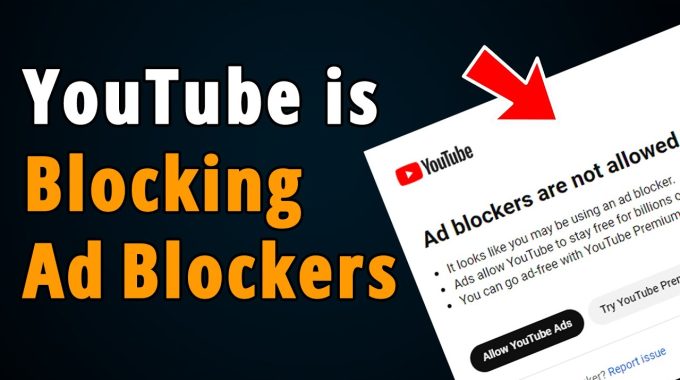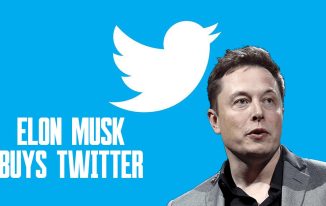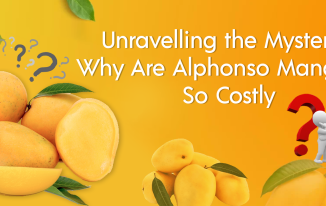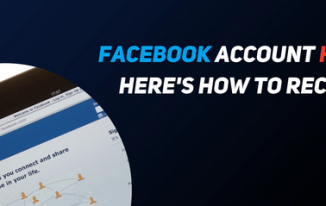Introduction:
You’ve probably experienced it before. You’re watching your favorite YouTube video, all set to enjoy the content, and then suddenly, an ad pops up. Sometimes, these ads can be annoying, interrupting your viewing experience. That’s where ad blockers come in handy. They promise to block those pesky ads, allowing you to enjoy uninterrupted content. However, if you’ve tried using ad blockers on YouTube, you may have noticed they don’t work. But have you ever wondered why? In this article, we’ll delve into the reasons why ad blockers aren’t allowed on YouTube.
Understanding Ad Blockers:
First things first, let’s understand what ad blockers are. Ad blockers are software programs or browser extensions designed to prevent advertisements from being displayed on web pages. They work by intercepting requests from your browser to ad servers and blocking the delivery of ads.
YouTube’s Advertising Model:
To understand why ad blockers don’t work on YouTube, it’s essential to understand how YouTube’s advertising model operates. YouTube, like many other online platforms, generates revenue primarily through advertising. Advertisers pay YouTube to display their ads to users. These ads can appear before, during, or after videos, as well as alongside search results and on the YouTube homepage.
The Importance of Ads for Content Creators:
One of the key reasons why ad blockers aren’t allowed on YouTube is because ads play a crucial role in supporting content creators. Many YouTubers rely on ad revenue as their primary source of income. When you watch a video on YouTube, the content creator earns a share of the revenue generated from the ads displayed alongside their content.
By blocking ads, users are essentially depriving content creators of their rightful earnings. This can have significant implications for creators, making it challenging for them to continue producing high-quality content. Without ad revenue, many content creators would struggle to sustain their channels and may be forced to seek alternative sources of income or even abandon their channels altogether.
YouTube’s Terms of Service:
Another reason why ad blockers aren’t allowed on YouTube is because they violate YouTube’s Terms of Service. When users sign up for a YouTube account, they agree to abide by the platform’s terms and guidelines. These terms explicitly prohibit the use of any software or means to interfere with or disrupt the normal functioning of YouTube, including the display of ads.
By using ad blockers on YouTube, users are effectively circumventing YouTube’s advertising system, which goes against the platform’s policies. As a result, YouTube reserves the right to take action against users who violate these terms, which may include restricting or suspending their accounts.
Ad Blocker Detection:
The ethics of ad blocking, especially concerning platforms like YouTube, present a nuanced dilemma that revolves around balancing user experience and content creators’ rights. On one hand, users often resort to ad blockers to improve their browsing experience, citing reasons such as avoiding intrusive ads, enhancing page load times, and protecting their privacy from tracking mechanisms. However, on the other hand, content creators rely on ad revenue to sustain their channels, compensate for their efforts, and even make a living.
From an ethical standpoint, it’s essential to consider both sides of the equation. Users have the right to control their online experience, including the choice to block ads. However, this right must be weighed against the consequences it may have on content creators who depend on ad revenue to continue producing valuable content.
One could argue that there is a moral obligation for users who enjoy and regularly consume content on platforms like YouTube to support creators by allowing non-intrusive ads. Alternatively, users could explore other avenues of supporting creators, such as directly donating, subscribing to premium services, or engaging with sponsored content.
Content creators, on the other hand, should also consider alternative revenue streams to mitigate the impact of ad blockers. Diversifying income sources, such as merchandise sales, sponsored content, crowdfunding, or membership programs, can reduce reliance on ad revenue and make their livelihoods more sustainable.
Ultimately, finding a balance between user experience and content creators’ rights requires open dialogue, technological innovation, and a mutual understanding of each party’s needs and concerns. It’s not a simple black-and-white issue but rather a complex ethical dilemma that demands thoughtful consideration and creative solutions from all stakeholders involved.
Branded Content and Sponsorships: Instead of interrupting the viewing experience with ads, brands are collaborating with content creators to produce sponsored content. This allows brands to integrate their message more seamlessly into the content while providing value to the audience.
Influencer Marketing: Leveraging influencers who have built a loyal following allows brands to reach their target audience in a more authentic way. Influencers can create sponsored content or simply mention products or services in their posts, reaching an engaged audience that trusts their recommendations.
Native Advertising: This involves creating ads that blend in with the platform’s content format. For example, on YouTube, brands can create videos that look and feel like regular content, but subtly promote their products or services.
Content Marketing: Brands are focusing on creating valuable content that educates, entertains, or solves problems for their target audience. This content can attract potential customers organically, without the need for traditional ads.
Interactive Ads: Interactive ads engage viewers by allowing them to participate in the ad experience. This can include interactive videos, quizzes, polls, or games that not only grab attention but also provide a more memorable experience.
Email Marketing: Building an email list allows brands to directly communicate with their audience without relying on third-party platforms. By providing valuable content and offers via email, brands can nurture relationships with their subscribers and drive conversions.
Social Media Marketing: Platforms like Instagram, TikTok, and Snapchat offer various advertising options, including sponsored posts, stories, and carousel ads. Brands can leverage these platforms to reach their target audience with visually appealing and engaging content.
Search Engine Optimization (SEO): Optimizing content for search engines helps brands rank higher in search results, increasing visibility and driving organic traffic to their websites or other online channels.
Partnerships and Collaborations: Collaborating with other brands or organizations can help expand reach and access new audiences. Whether it’s co-hosting events, cross-promoting content, or bundling products/services, partnerships can be a mutually beneficial way to reach more people.
Experiential Marketing: Creating memorable offline experiences allows brands to connect with their audience in a more meaningful way. This can include pop-up events, workshops, or interactive installations that leave a lasting impression on attendees.
xploring the impact of ad blocking on YouTube’s business model involves considering the interplay between user engagement and revenue. Ad blocking directly affects revenue streams by reducing the number of ads users see, potentially leading to decreased ad revenue for YouTube. However, the impact on user engagement is more nuanced.
On one hand, users who employ ad blockers may have a more positive experience on the platform, as they are not interrupted by ads. This could potentially lead to higher user satisfaction and increased retention. On the other hand, if YouTube’s revenue is significantly impacted by ad blocking, it may struggle to invest in content creation, platform improvements, and other features that enhance user experience.
YouTube’s response to ad blocking has been multifaceted. They have implemented measures to detect and discourage ad blocking, such as limiting access to certain features for users who block ads. Additionally, YouTube has diversified its revenue streams beyond traditional advertising, with initiatives like YouTube Premium, which offers an ad-free experience for subscribers.
Overall, while ad blocking poses challenges to YouTube’s ad-driven business model, the platform’s focus on user engagement and exploring alternative revenue streams helps mitigate these challenges and ensures its long-term sustainability.




